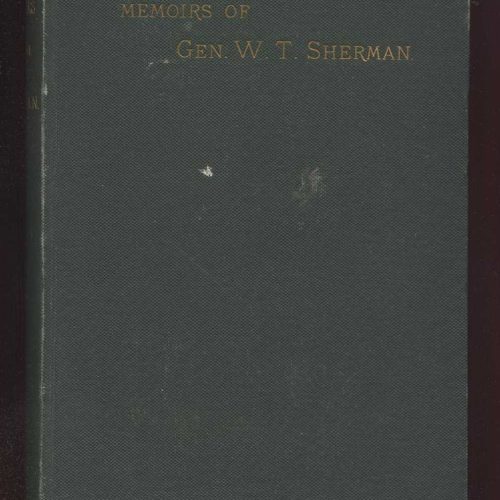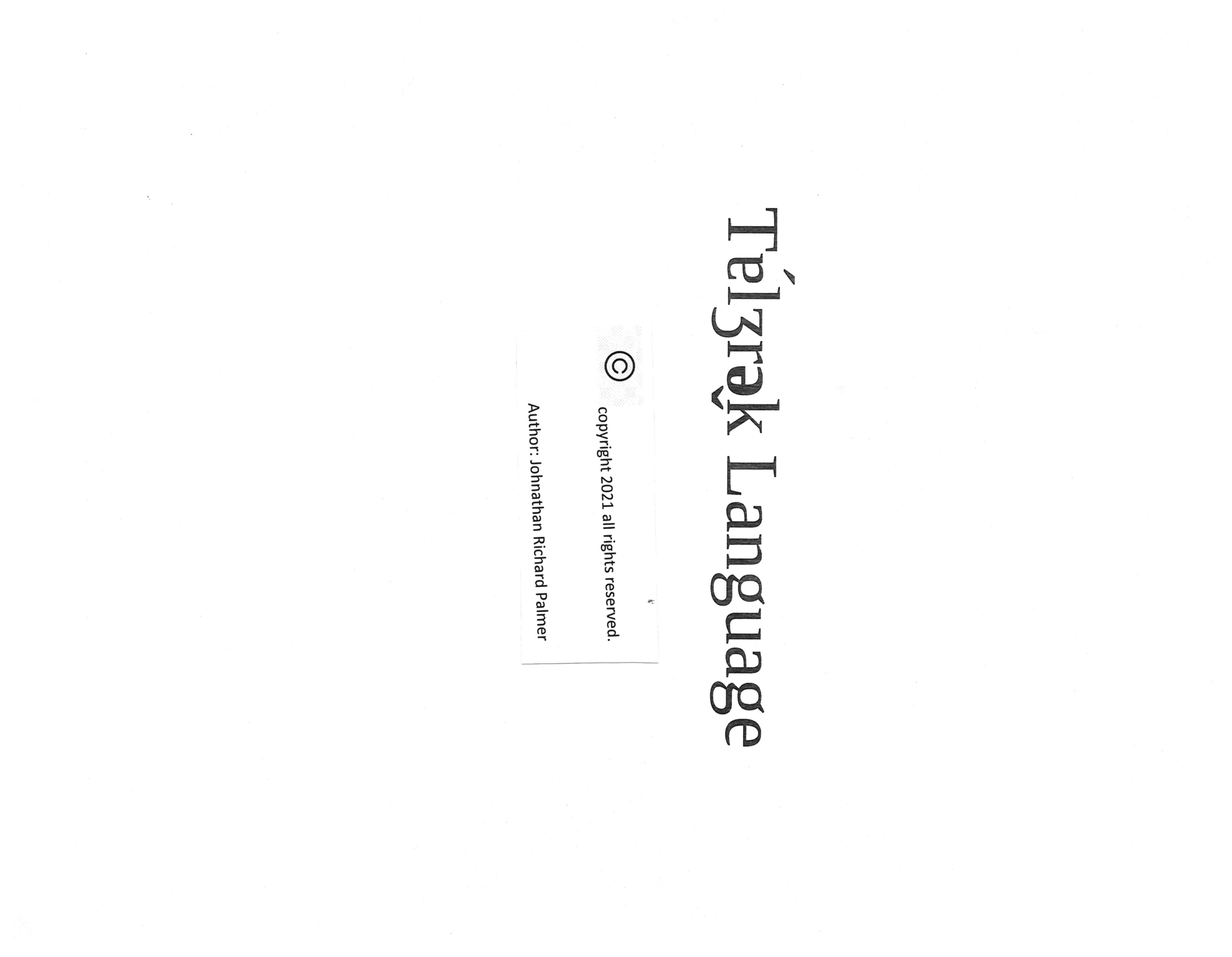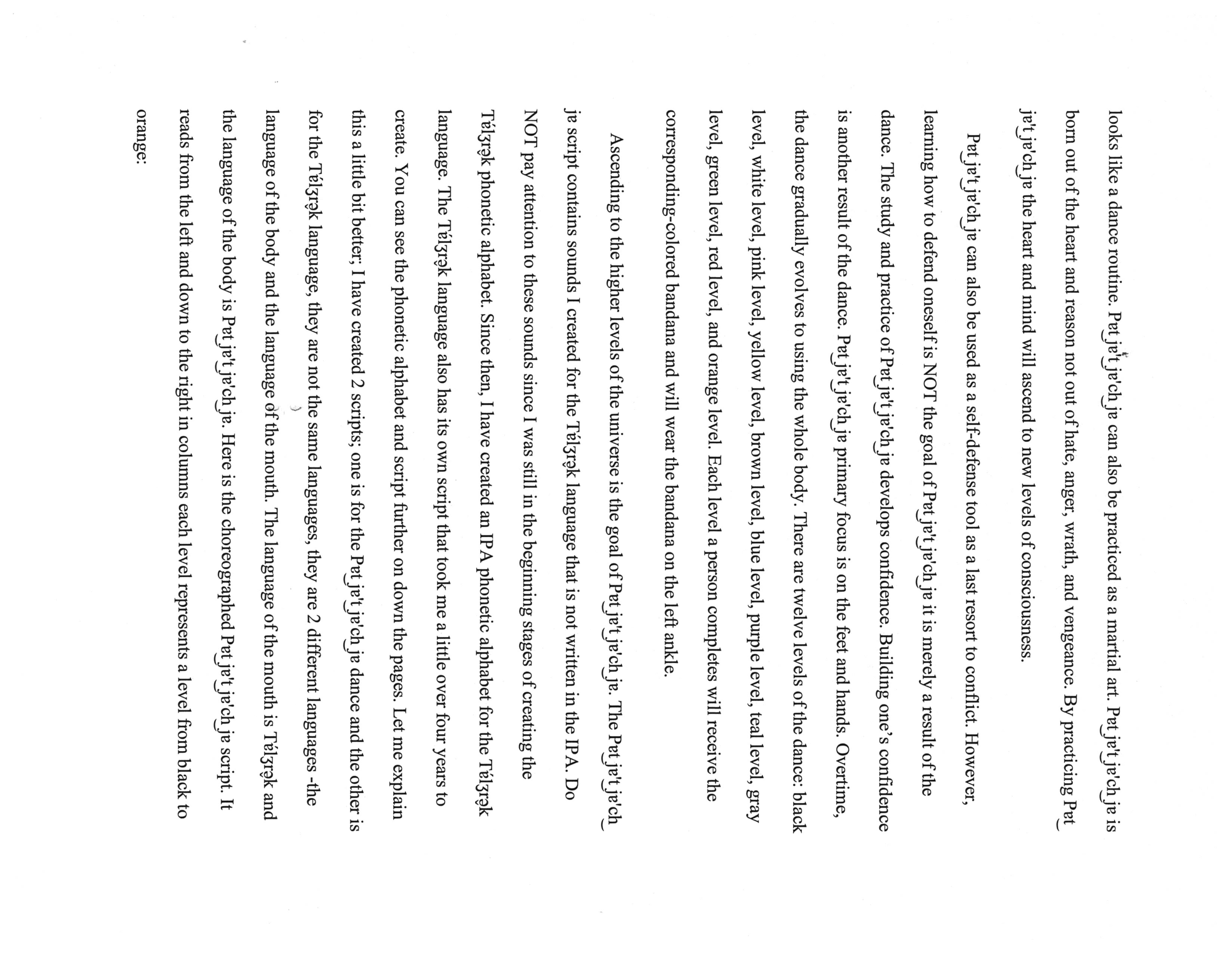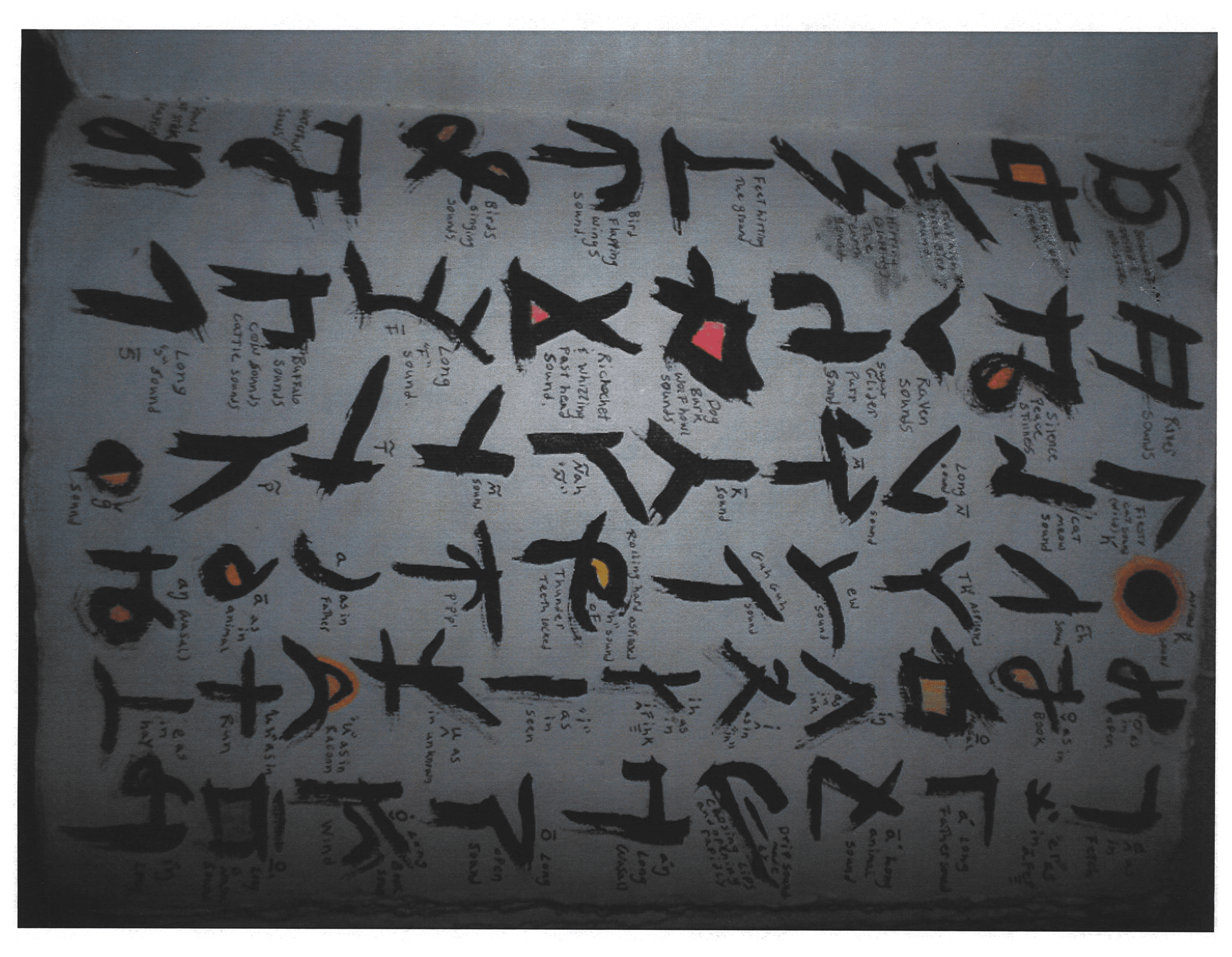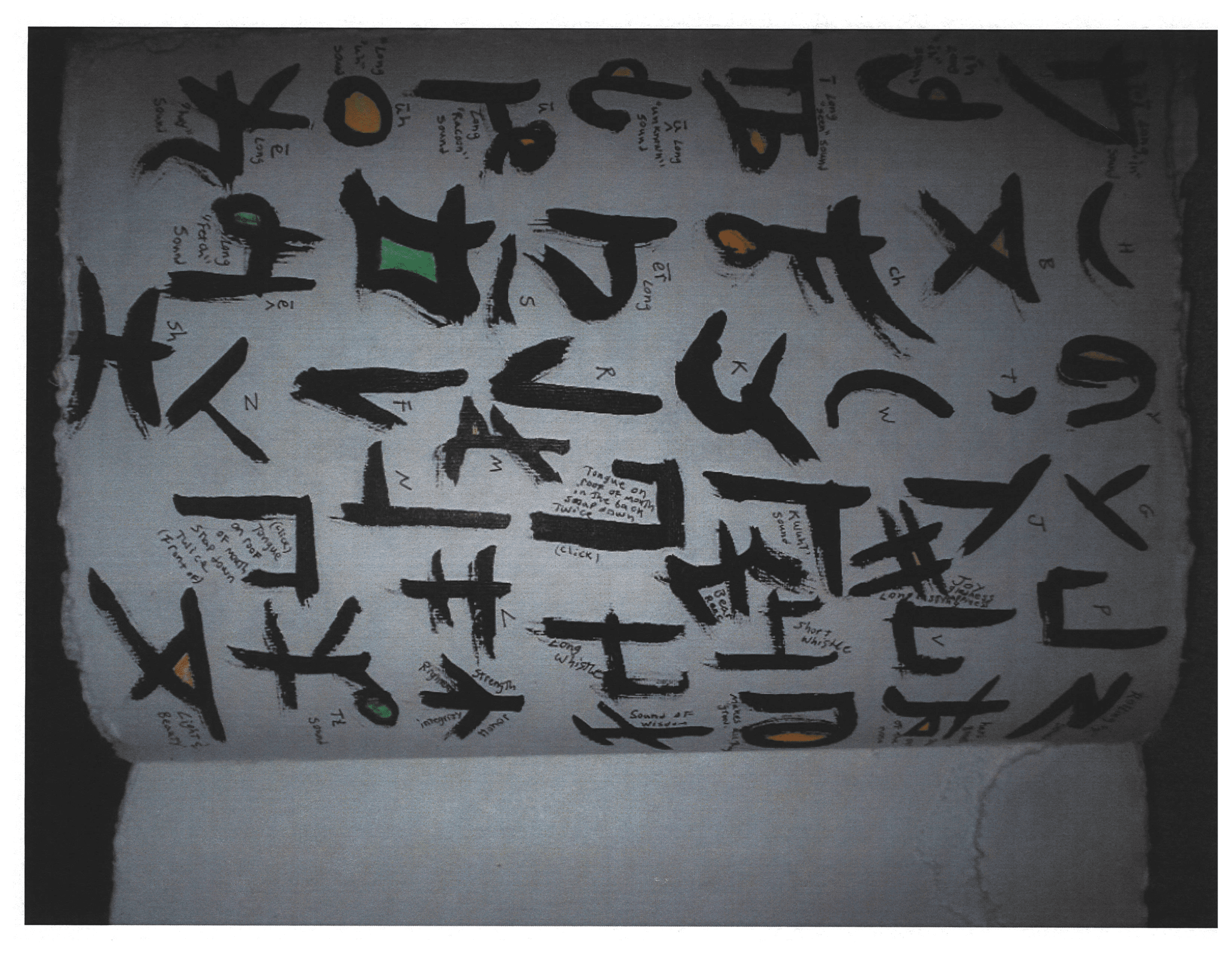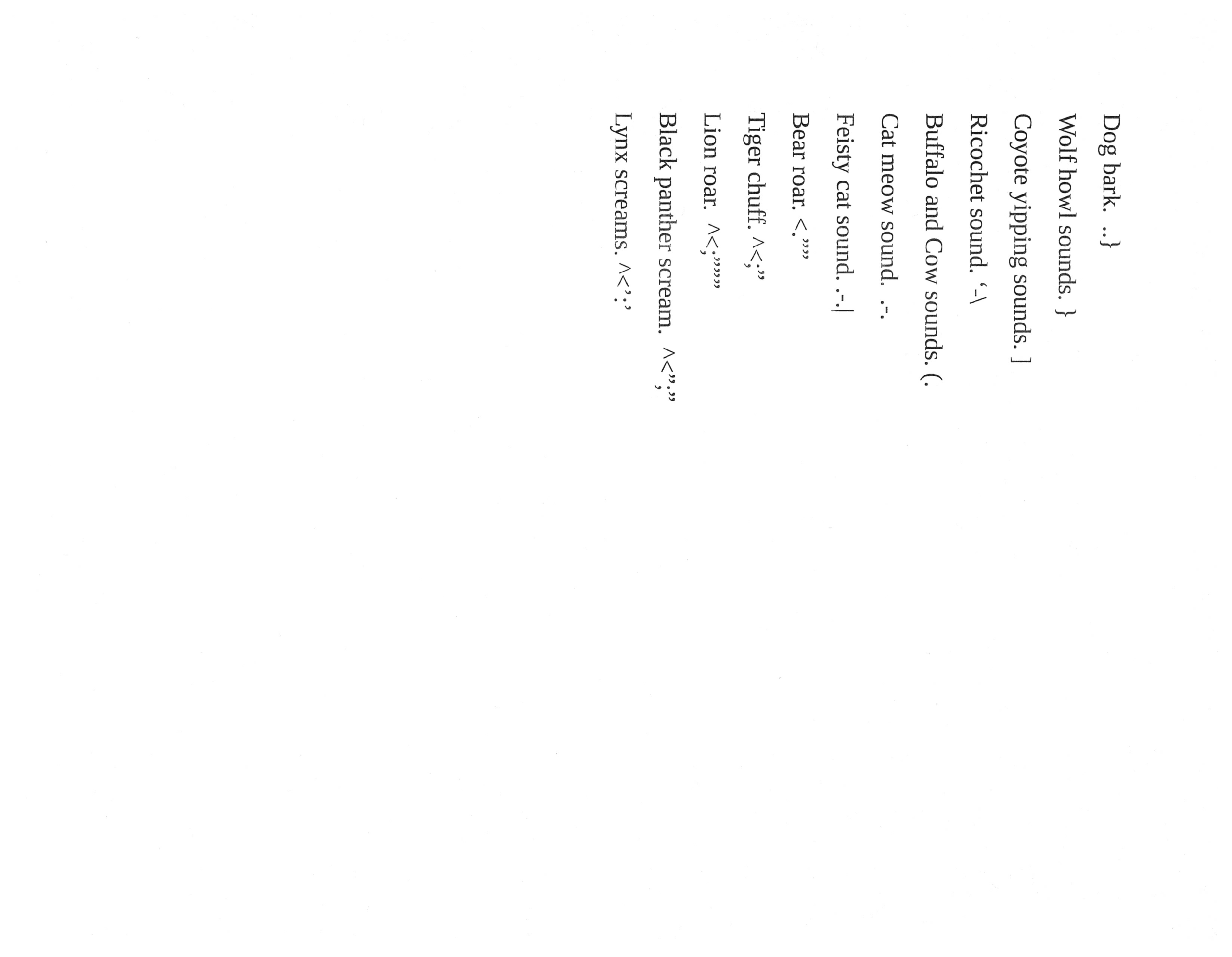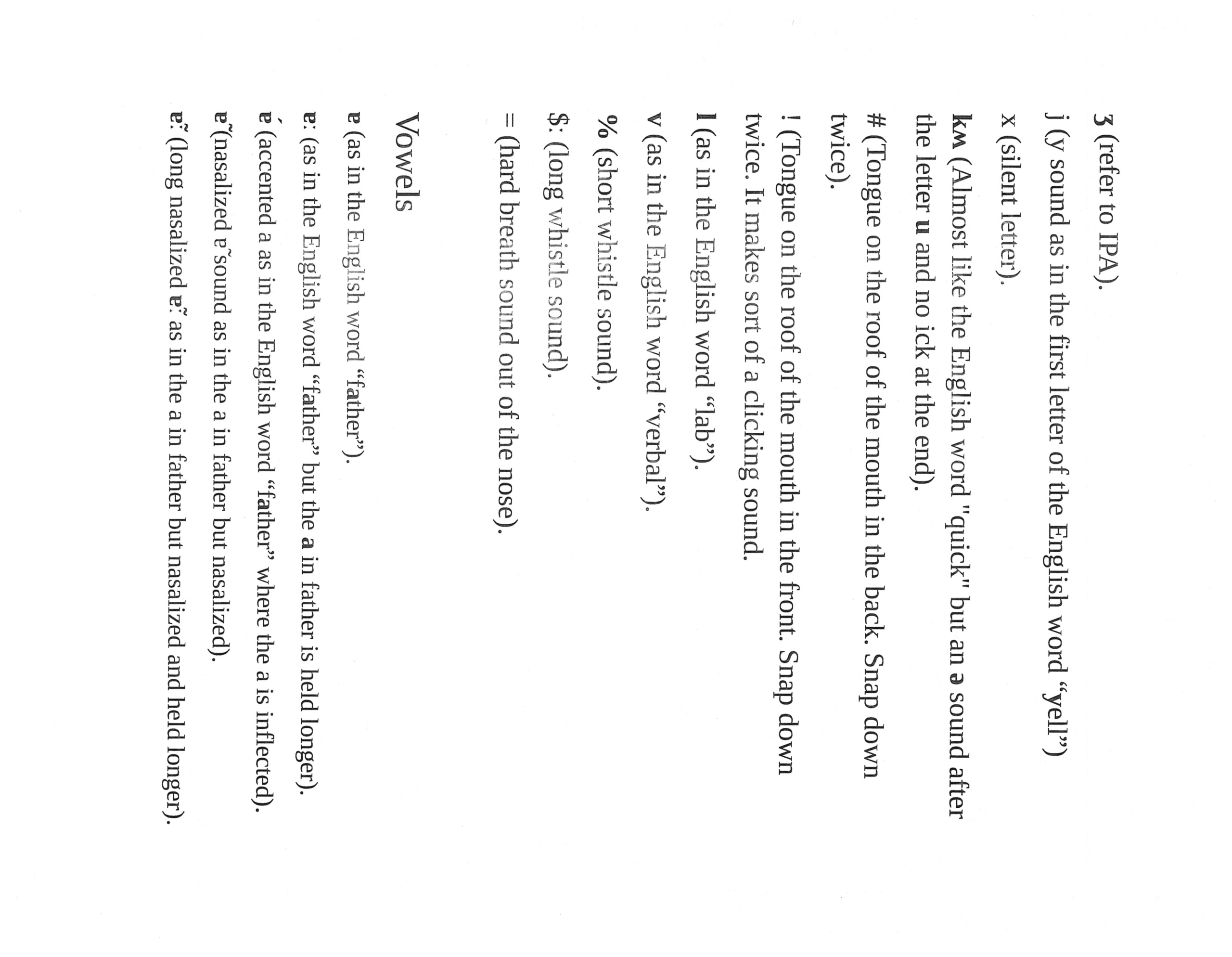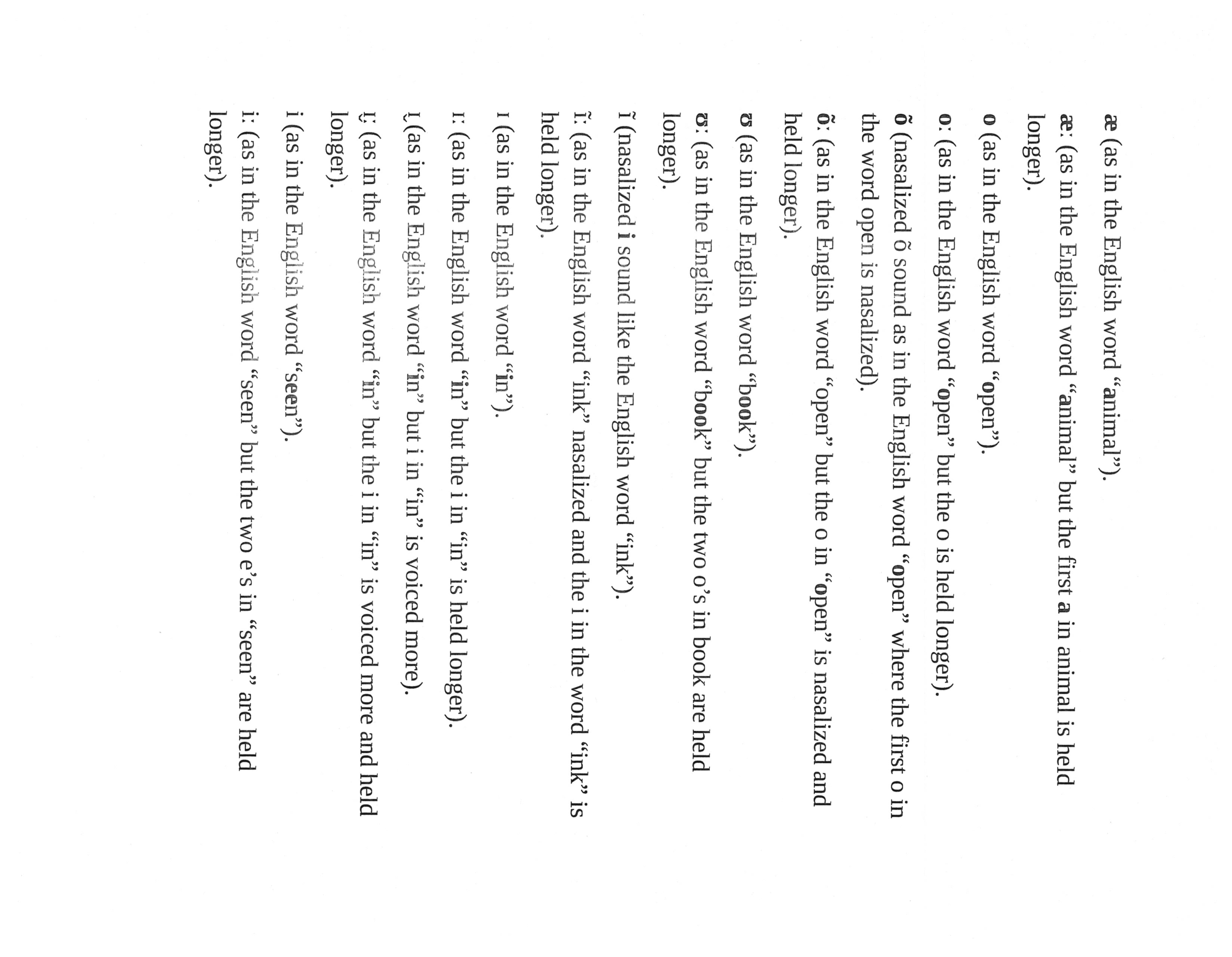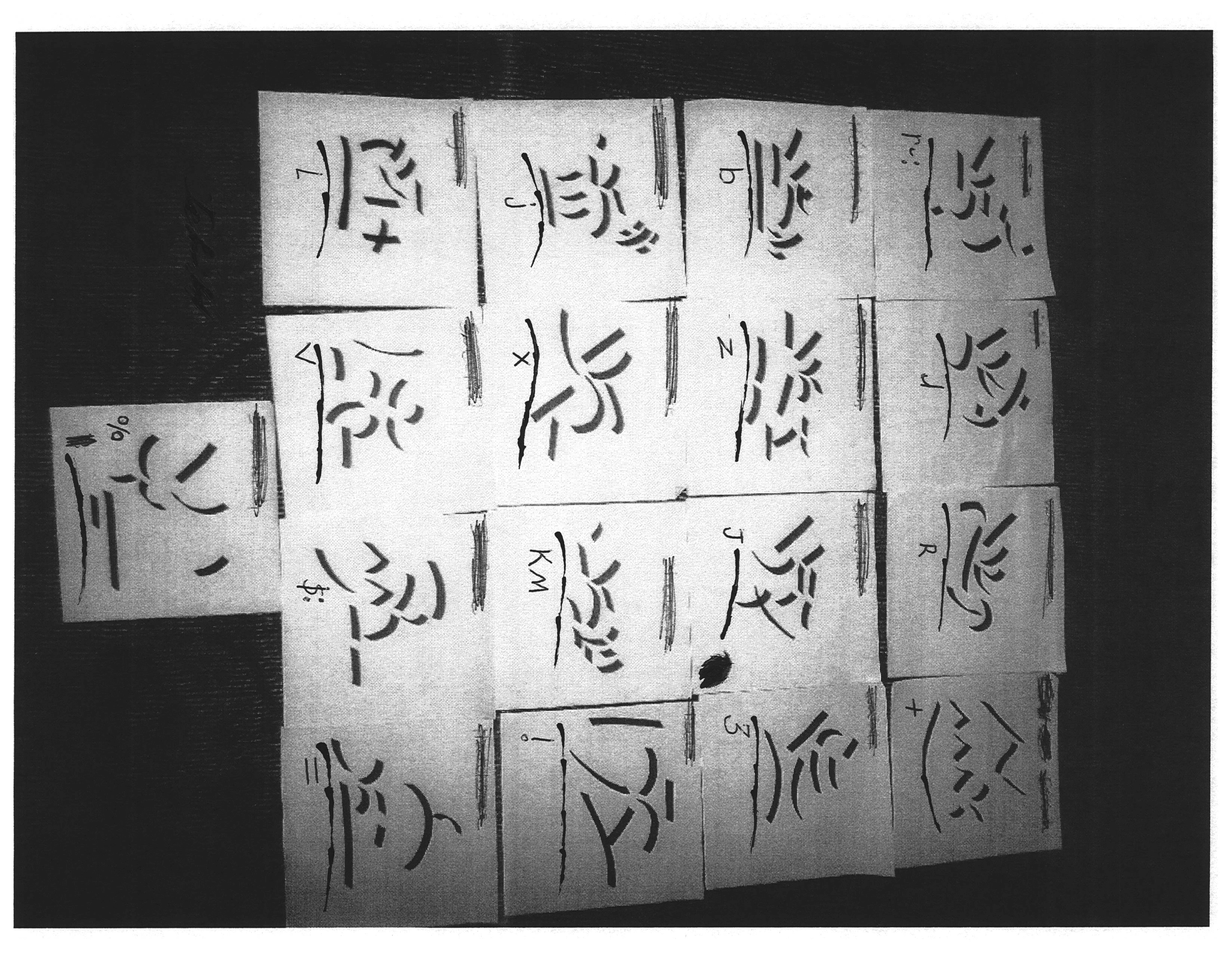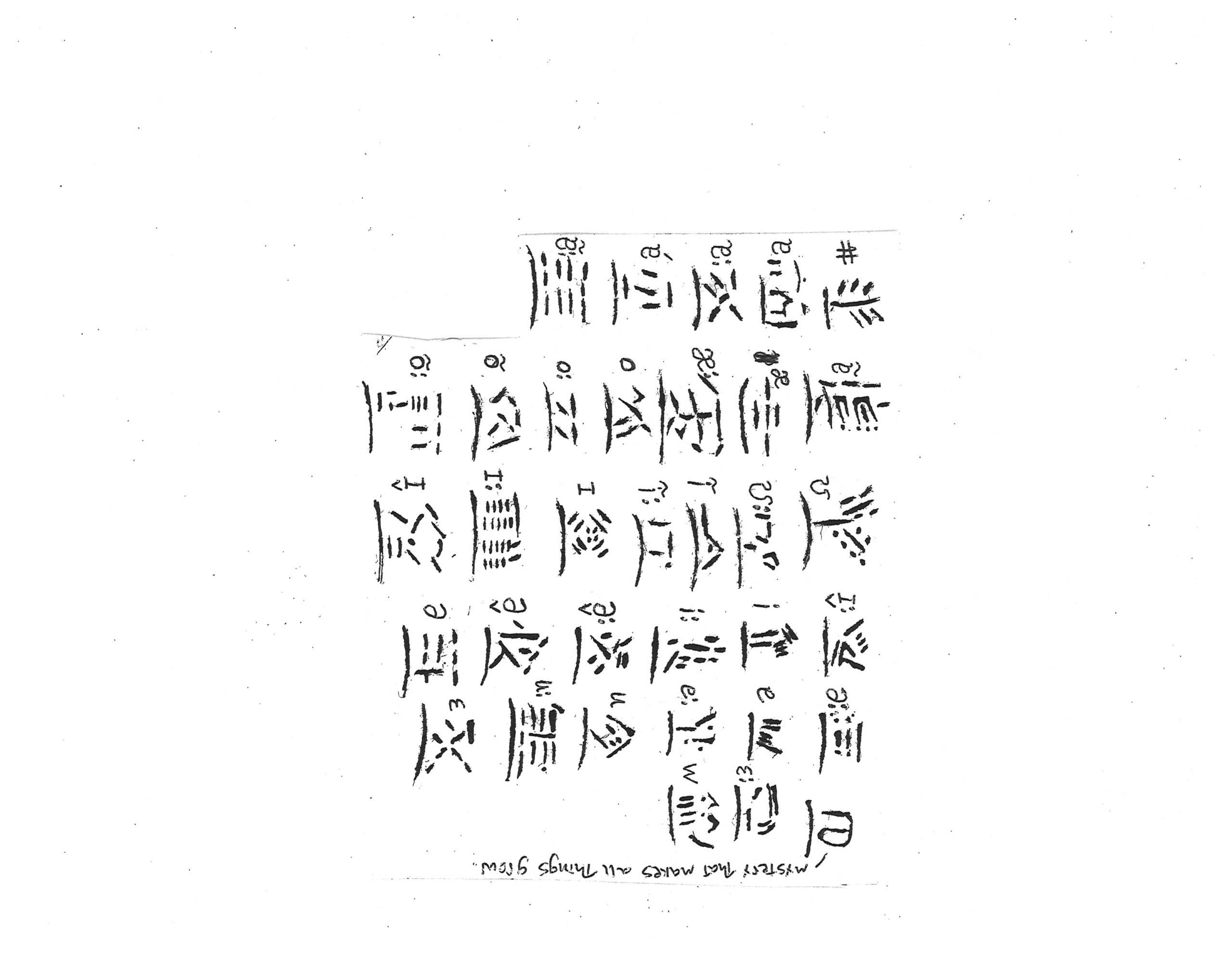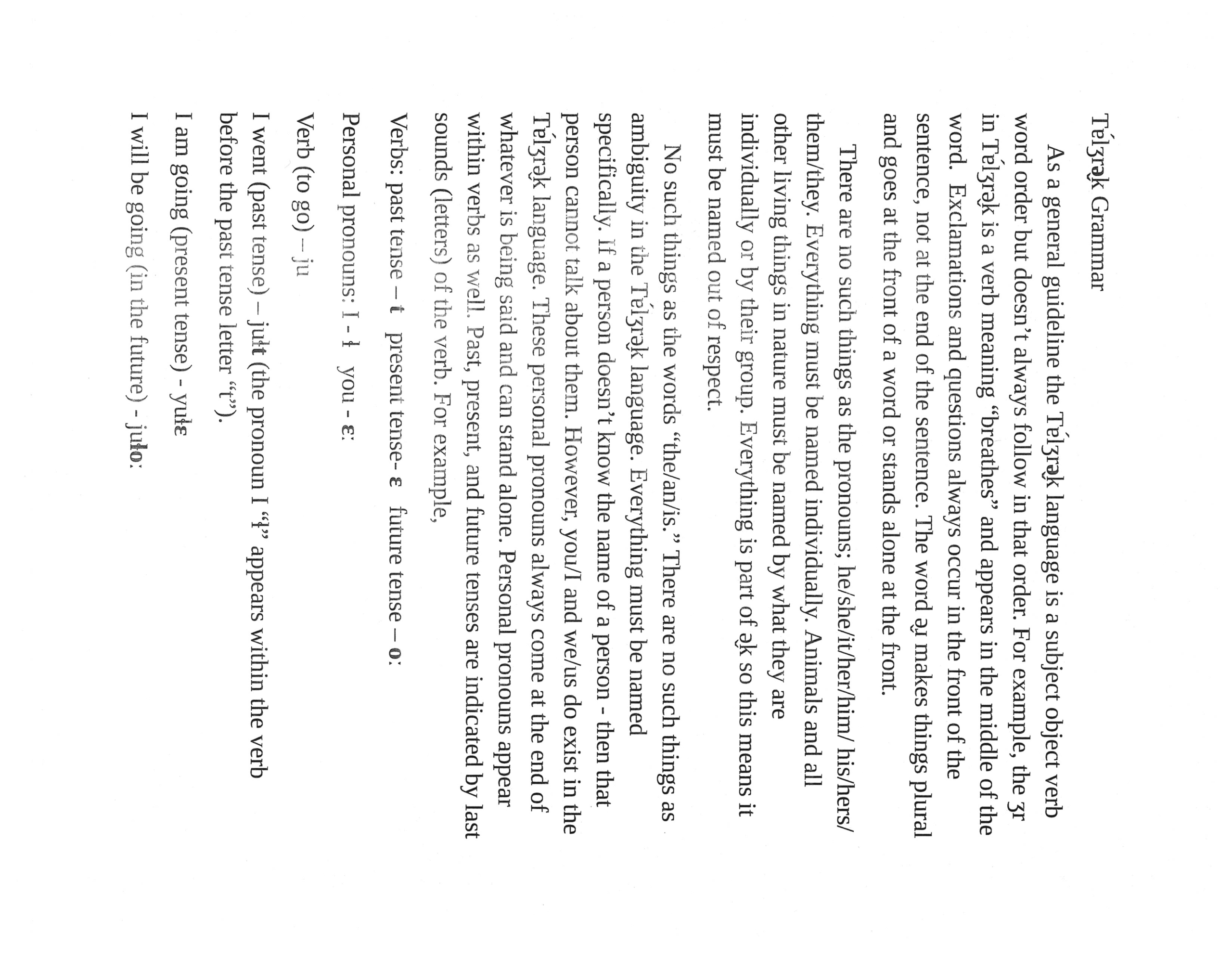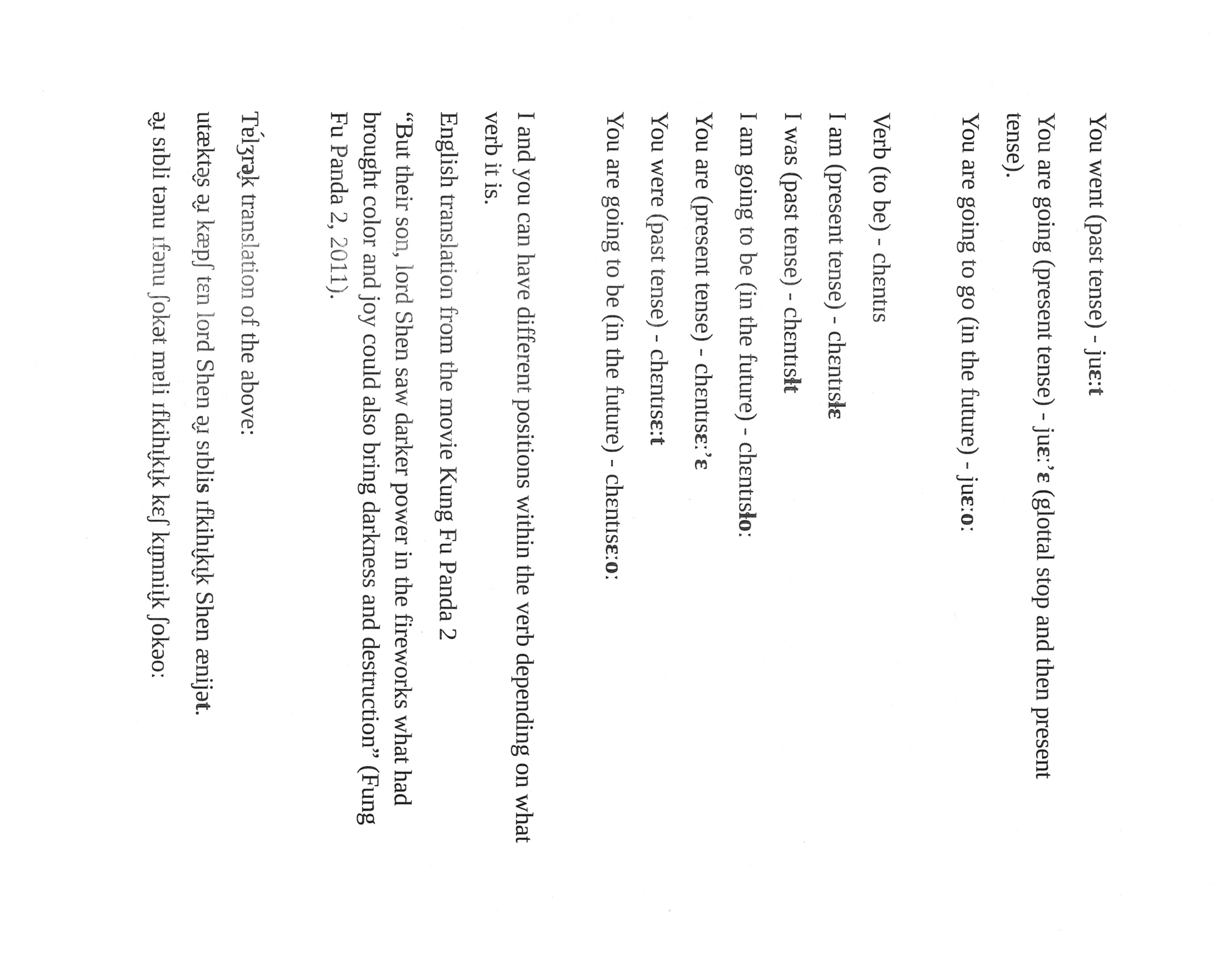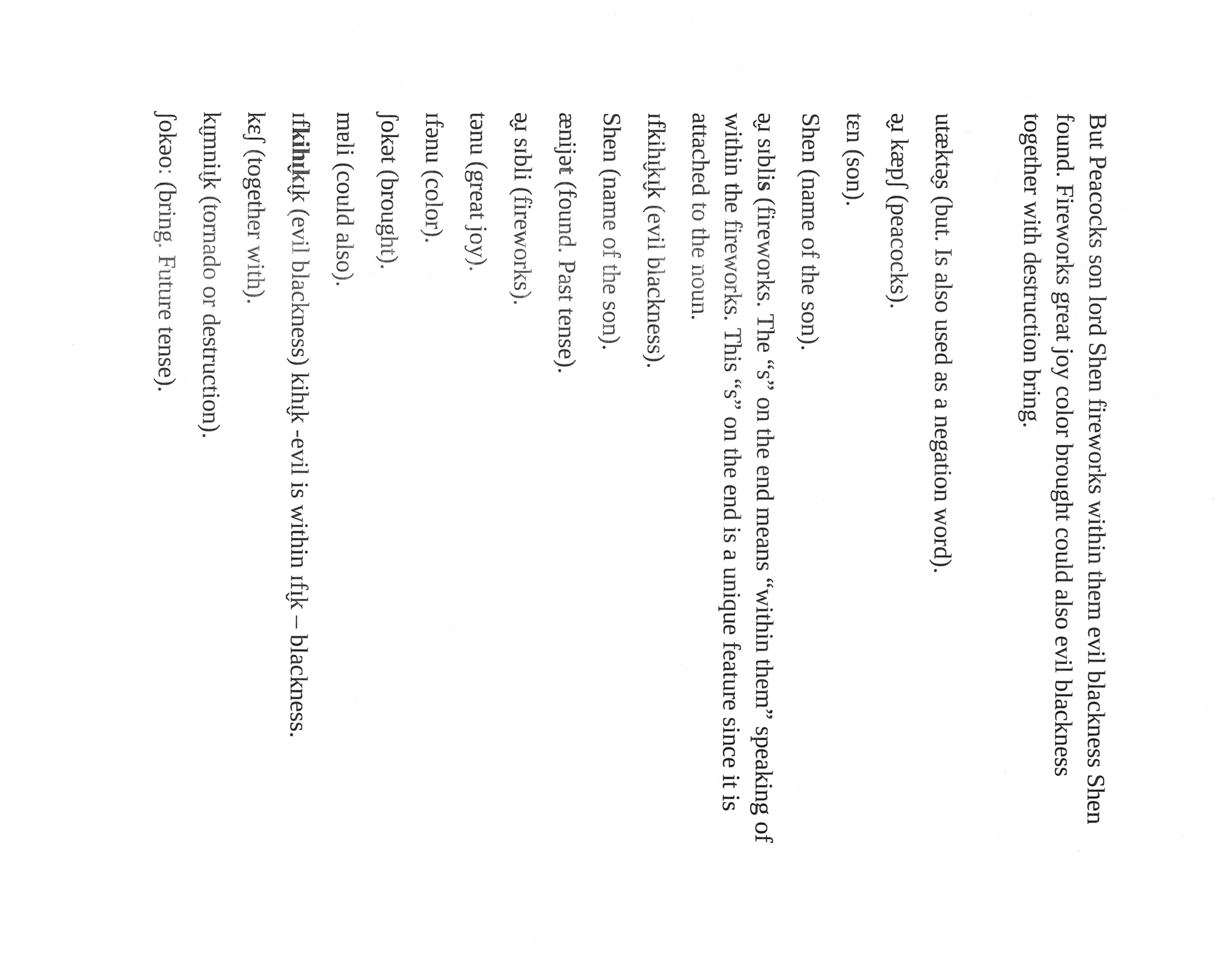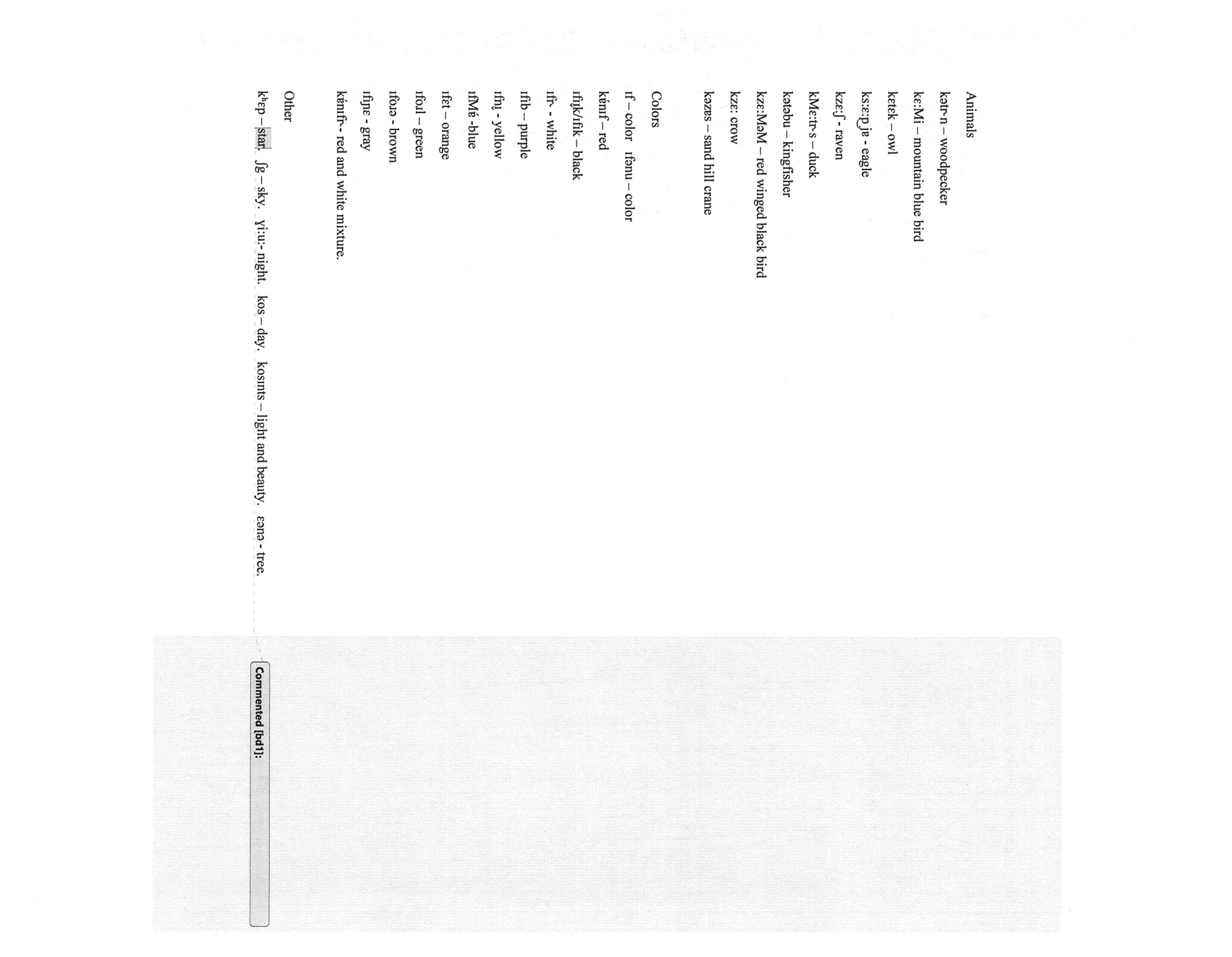Johnathan R. Palmer’s Short Memoir on the Creation
of the Tɐ́ lʒrə̬ k Conlang and Dance
Author: Johnathan Richard Palmer
MS Date: 04-18-2021
FL Date: 11-01-2022
FL Number: FL-000086-00
Citation: Palmer, Johnathan Richard. 2021. “Johnathan R.
Palmer’s Short Memoir on the Creation of
the Tɐ́ lʒrə̬ k Conlang and Dance.” FL-
000086-00, Fiat Lingua,
2022.
Copyright: © 2021 Johnathan Richard Palmer. This work
is licensed under a Creative Commons Attribution-
NonCommercial-NoDerivs 3.0 Unported License.
http://creativecommons.org/licenses/by-nc-nd/3.0/
Fiat Lingua is produced and maintained by the Language Creation Society (LCS). For more information
about the LCS, visit http://www.conlang.org/
Johnathan R. Palmer’s Short Memoir on the Creation of the
Tɐ́ lʒrə̬k Conlang and Dance
Personal Reflections on Conlanging
I remember one day in autumn I decided to take a pencil and notebook with
me down to a special place I knew of. This place was outside in the hills
situated among pine trees, hawthorn trees, birch trees, and dense brush. There
was a particular hill that I walked up to. This was my special place. As I sat
there on the hill, I closed my eyes and took a deep breath. When I exhaled, I
decided to sit still and listen to the sounds of nature. I readily had my pencil
and notebook available so I could document any sounds I could detect. It was
such a beautiful fall day. I was sitting amid colorful leaves of gold and brown
when I heard a stick snap. It was probably a deer walking up around me, so I
remained silent. Then I heard so many kinds of birds singing as the wind blew
over my face. I could also hear a creek nearby. At that very moment, I began to
document all the sounds I heard up to that point.
Conlanger’s process
Some of these sounds I found in nature became the foundation of my first
conlang project that I named the Tahljruhk language. I use sounds of my
conlang to build words. I received mostly all of my inspiration for all my
vowel sounds from the Choctaw language. While consonant sounds were
inspired by Hebrew, Lakota, and English. I derived what I knew about Lakota
grammar and incorporated that into my conlang as well. My writing system
looks a lot like I got my inspiration from Chinese characters but was based on
my own mapping of landscapes I saw in nature. That’s why all my characters
have lines because they are all pictures of places I have been, things I’ve seen,
and things I’ve imagined.
Memories of creating a particular conlang
While I was sitting silently there on that hill listening and documenting
sounds, I started to remember things from my childhood. I remember traumatic
experiences I endured as a little boy – things like sexual abuse, neglect, verbal
abuse, divorced parents, and poverty. Even though I remembered all these
things, over time I came to the realization that the conlang I was creating was
for my own personal comfort and healing. This language that would become
known as the Tahljruhk language and dance was meant for the healing of my
mind and body. I know this to be true since I would spend hours practicing the
dance while I was working Night Shift at my job. So, the Tahljruhk language
and dance is deeply personal to me.
Side notes
I remember writing an English cipher when I was eight years old and giving
it to my grandma to look at. She thought it was neat. She was very
encouraging. I have come a long way since then. I mention this because it was
my first attempt at trying to create my own language even though it wasn’t a
conlang but a cipher. When I look back on it now, I realize that I was born with
an innate love for languages, as well as how languages work, and conlanging.
It has never left me. There are three reasons for why I conlang: 1) Conlanging
provides me comfort and healing for my mind and body. 2) Conlanging brings
me pleasure and happiness. 3) I was born with an inherent desire to conlang.
My first physical conlang documentation; please see the documents below:
• Tɐ́lʒrə̬ k Language
-Johnathan Richard Palmer (Author). LCS Board Member.

